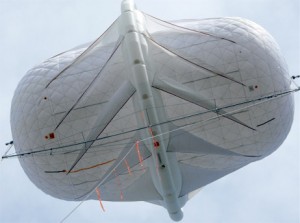What exactly is Heaven on Earth?
http://blogcritics.org/books/article/heaven-on-earth-the-rise-and/
The phrase “Heaven on Earth” in the context of the book is lifted from a phrase by Moses Hess who, in his Communist Confession of Faith, noted that while Christians imagine a heavenly joy “We, on the other hand, will have this heaven on earth.” It’s exactly this kind of religious fervor for the concepts of socialism (and communism – the terms are used interchangeably) that gave socialist regimes the license to do whatever it took to cram Paradise down people’s throats. And when people rejected the “freedom” offered to them, the results were horrific: Mussolini’s Italy, Stalin’s Soviet Republic, and Mao’s China. In total, Muravchik estimates that more than 100 million people were murdered in the name of socialism since 1917.
:}
Some people mistake it for State Run Fascism.
BOOKS, EDITORIALS & NEWS REPORTS
DEATH FOR CONVENIENCE
The great en-masse deception
CONSCIENTIOUS
OBJECTIVE ACTION
WOLF & LAMB
Animal Free Cooking
The Heaven On Earth phrase well illustrates the aspirations of most humanity. It is the point at which all our individual and collective efforts from across the ages of humanity are fulfilled. It is the point at which we are freed by the truth.
As we proceed on our living journey, the words of Meister Johann Eckhart, a 14th century mystic, might help to re-focus our individual tasks: “Earth should become like heaven, so God can find a home here”. Herein are our individual and mutual tasks – to transform the things of ourselves which we sense in our heart are incompatible with heaven. When we make the change, we create a difference, which in turn becomes challenged. When we hold our ground, the world around us changes in consequence. By changing ourselves, we change the world.
The world is in extreme crisis and needs our individually unique care. The topics presented on this site are those which the author emphasizes for humanity’s healing.
:}
Some confuse it with theocracy.
:}
While others are simply obscure…
But Flying Turbines are much more practical:
http://blogs.ft.com/energy-source/2009/06/16/turbines-in-the-sky/
Turbines in the sky
June 16, 2009 11:44am
Magenn’s MARS prototype
Wired takes a look at several companies working on high altitude wind turbines: ranging from floating, kite-like devices tethered to long power cables to quaint-looking power-generating flying machines.
The devices are very diverse. Magenn’s helium-filled devices resemble floating kites; Sky Windpower has a ‘controlled helicopter’ with four rotary blades keeping it suspended. Kite Gen’s devices describe a figure eight in the air.
There’s no doubt the wind is stronger at high altitudes, and the devices would take up less ground space, perhaps avoiding one key objection to wind turbines. The attractions are many:
Wind’s power — energy which can be used to do work like spinning magnets to generate electricity — varies with the cube of its speed. So, a small increase in wind speed can lead to a big increase in the amount of mechanical energy you can harvest. High-altitude wind blows fast, is spread nicely across the globe, and is easier to predict than terrestrial wind.
Companies also claim the devices would pose less of a threat to avian life, and emit lower noise pollution than regular wind turbines.
But they’re not without drawbacks.
High-altitude winds, although they are far stronger than terrestrial winds, don’t offer any solution to the ‘baseload’ problem, the inconsistency of supply affecting many renewables. In a article in Energies journal:
Because jet streams vary locally and seasonally, however, the high-altitude wind power resource is less steady than needed for baseload power without large amounts of storage or continental-scale transmission grids, due to the meandering and unsteady nature of the jet streams.
:}
Please see the rest of the article for more info
http://www.youtube.com/watch?v=SmxB2BwVufA&feature=fvst
:}













